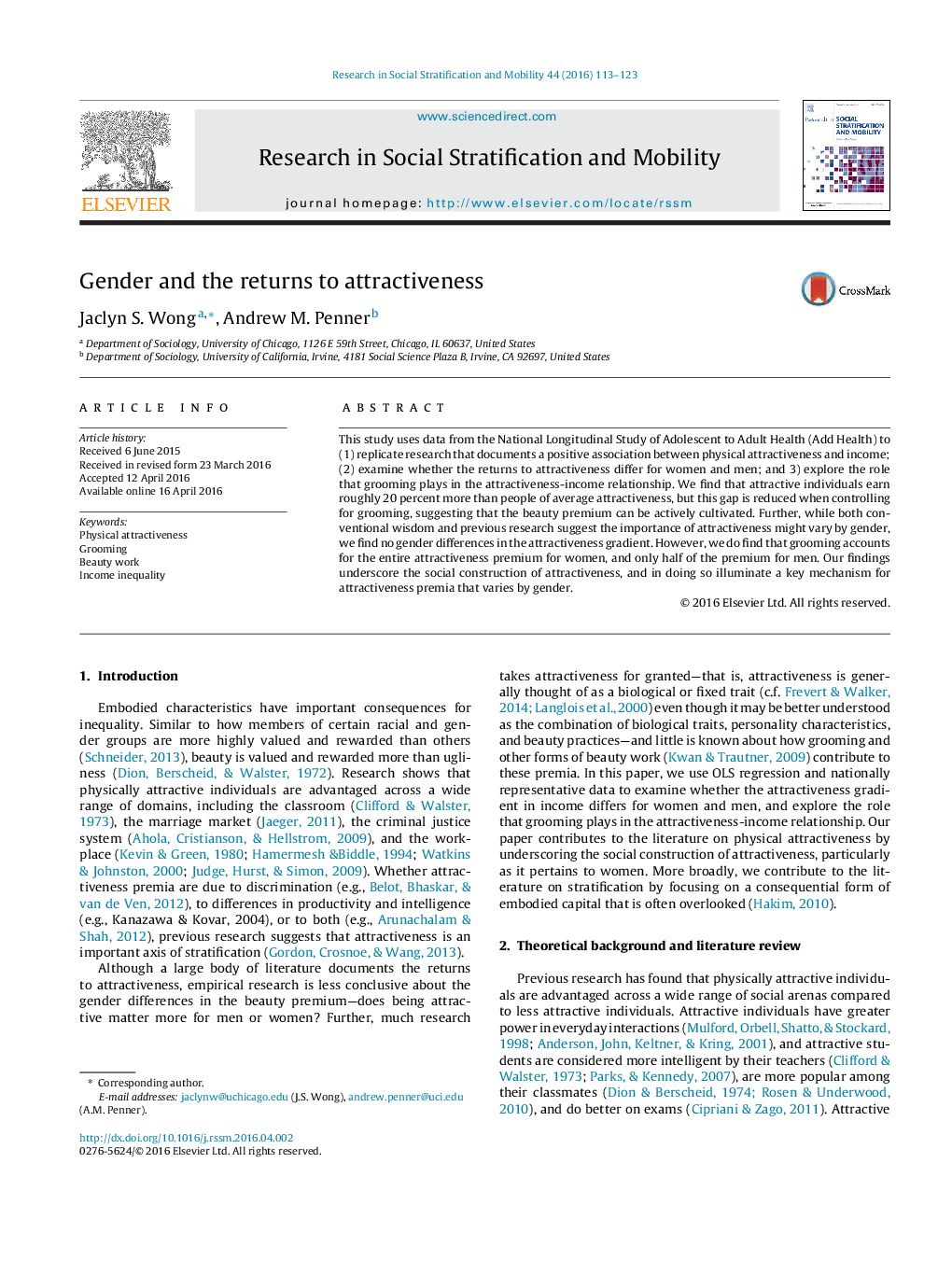| Article ID | Journal | Published Year | Pages | File Type |
|---|---|---|---|---|
| 7409997 | Research in Social Stratification and Mobility | 2016 | 11 Pages |
Abstract
This study uses data from the National Longitudinal Study of Adolescent to Adult Health (Add Health) to (1) replicate research that documents a positive association between physical attractiveness and income; (2) examine whether the returns to attractiveness differ for women and men; and 3) explore the role that grooming plays in the attractiveness-income relationship. We find that attractive individuals earn roughly 20 percent more than people of average attractiveness, but this gap is reduced when controlling for grooming, suggesting that the beauty premium can be actively cultivated. Further, while both conventional wisdom and previous research suggest the importance of attractiveness might vary by gender, we find no gender differences in the attractiveness gradient. However, we do find that grooming accounts for the entire attractiveness premium for women, and only half of the premium for men. Our findings underscore the social construction of attractiveness, and in doing so illuminate a key mechanism for attractiveness premia that varies by gender.
Related Topics
Social Sciences and Humanities
Economics, Econometrics and Finance
Economics, Econometrics and Finance (General)
Authors
Jaclyn S. Wong, Andrew M. Penner,
